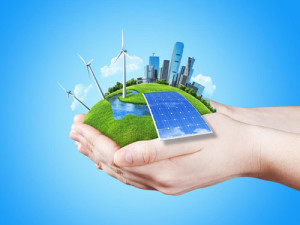 Renewable energy is produced with natural resources, which are continuously and sustainably replaced. These energy technologies have many benefits, such as good air quality, lower reliance on fossil fuels, less impact in global warming, increased jobs for the economy and the protection of the environment, including wildlife habitats and water quality. A key objective behind renewable energy production is to give people a healthy and secure life without putting the wider environment at risk.
Renewable energy is produced with natural resources, which are continuously and sustainably replaced. These energy technologies have many benefits, such as good air quality, lower reliance on fossil fuels, less impact in global warming, increased jobs for the economy and the protection of the environment, including wildlife habitats and water quality. A key objective behind renewable energy production is to give people a healthy and secure life without putting the wider environment at risk.
Types of Renewable Energy
Hydropower renewable energy
Hydropower renewable energy uses water for electricity generation. The greatest renewable energy source on Earth is Hydropower. It accounts for 20% of the world’s electricity and 90% of all renewable output.
Hydropower plants have a number of benefits, for example cost efficiency: they do not require too much money to build. In addition to this, they are easy to maintain and are one of the most efficient electricity generating sources around.
Wind renewable energy
Wind renewable energy uses wind power to spin a dynamo. Many areas of the world have very easy access to wind. If the plant is located onshore, it’s cheaper to run and operate it. Onshore wind turbines do not have the extreme generation capacity as offshore wind turbines do. Offshore wind turbines’ installation and maintenance require huge financial outlay, but are stronger and are exposed to a better wind supply.
Solar renewable energy
Solar renewable energy uses the power of the sun to produce electricity. Solar cells convert the sun’s energy into electricity through semiconductors. Solar PV can be positioned in compact boards. These boards can be placed on roofs for acquisition of energy.
Anaerobic digestion renewable energy
Anaerobic digestion renewable energy harnesses the power of organic matter to produce electricity. Organic matter breaks down in silos, where microorganisms have been added, and oxygen removed.
Common ingredients for an AD silo include waste water, manure and vegetation. These products are processed and turned into methane, which is then used to generate electricity.
Biomass renewable energy
Biomass renewable energy uses plants for electricity generation. It includes old or rotten wood havested from forests. Other popular plant matter includes crops, such as willow, hemp and poplar.
Among crops, logs are preferred over more dense wooden pellets, as these are both energy efficient and commonly sourced.
Biofuel renewable energy
Biofuel renewable energy is similar to biomass renewable but uses alternative crops and different processing methods. Liquid, gas or solid fuel source are produced by using sugar beet, soya or oilseed rape that are grown and then burned.

